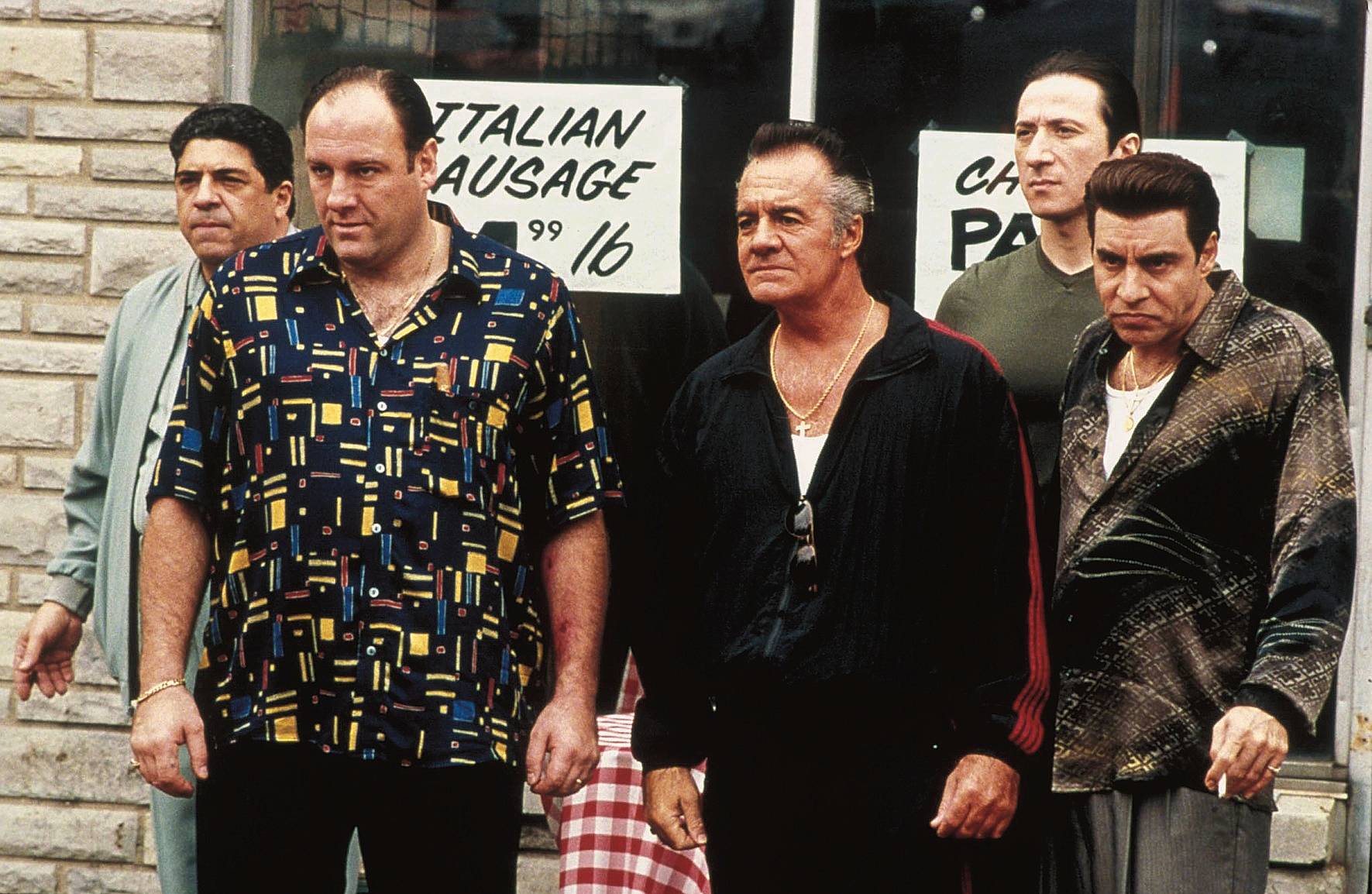Who Are Sopranos?
Sopranos represent the highest female singing voice, distinguished by their clear, bright, and agile qualities. This vocal range typically spans from middle C (C4) to high C (C6) and beyond, offering a wide array of possibilities in musical expression.
Sopranos are integral to various musical genres, such as opera, classical music, pop, and jazz. Their voices possess the unique ability to soar above orchestral arrangements, captivating audiences with their expressive range and emotional depth. Historical legends like Maria Callas, Renata Tebaldi, and Beverly Sills have left an indelible mark on the world of music with their exceptional vocal talents.
Read also:Kody Brown The Current Status Of His Marriages And Rumors About A New Wife
Exploring the World of Sopranos
Sopranos, known for their highest female singing voice, possess remarkable qualities that have fascinated audiences for centuries. Their vocal abilities are a blend of clarity, brightness, and agility, making them indispensable in the world of music.
- Range: Typically spans from C4 to C6 and beyond.
- Timbre: Clear, bright, and agile sound.
- Genres: Opera, classical, pop, and jazz.
- Famous Sopranos: Maria Callas, Renata Tebaldi.
- Vocal Power: Soaring melodies, expressive range.
- Emotional Depth: Ability to convey a wide range of emotions.
- Agility: Mastery of intricate passages and rapid runs.
- Versatility: Adaptability across various musical styles.
These defining characteristics highlight the extraordinary abilities of sopranos. Their vocal range enables them to perform demanding operatic arias and delicate lieder with equal finesse. Their clear and agile voices effortlessly navigate complex vocal passages, while their versatility allows them to shine in diverse musical genres, from the soaring melodies of Puccini to the rhythmic intricacies of jazz.
1. Understanding the Vocal Range of Sopranos
The vocal range of sopranos, extending from C4 to C6 and beyond, is a fundamental aspect of their vocal identity. This expansive range allows them to perform a diverse repertoire, from the soaring melodies of opera to the intricate passages of contemporary classical music. The lower end of the range, from C4 to G5, is marked by a warm and resonant quality, making it ideal for lyrical and dramatic roles in opera. The upper range, from A5 to C6 and beyond, showcases their agility and power, enabling them to execute high-flying coloratura passages with precision and ease.
The impressive range of sopranos empowers them to tackle demanding vocal challenges with versatility and grace. They can seamlessly transition between delicate pianissimo passages and powerful forte sections, conveying a wide array of emotions through their singing.
In summary, the vocal range of C4 to C6 and beyond is a critical component of the soprano voice. It grants them the flexibility and power to perform a wide variety of repertoire, from classical opera to contemporary compositions. This range enables sopranos to captivate audiences with their soaring melodies, intricate coloratura, and expressive range.
2. The Unique Timbre of Sopranos
The timbre of sopranos, characterized by its clarity, brightness, and agility, is a defining feature that distinguishes them from other vocal ranges. This distinctive vocal quality arises from a combination of physiological factors and refined vocal techniques.
Read also:Understanding The Impact Of Camilla Araujos Onlyfans Leak
Sopranos typically have thinner and shorter vocal cords than lower vocal ranges, allowing them to vibrate more rapidly and produce higher frequencies. This results in the clear and bright timbre so characteristic of soprano voices. Additionally, sopranos develop advanced vocal techniques that emphasize breath control, resonance, and diction, further enhancing the clarity and agility of their voices.
The clear, bright, and agile timbre of sopranos is essential for their ability to perform across various musical styles. In opera, they can soar above the orchestra with effortless grace, delivering complex coloratura passages with precision and clarity. In classical music, they navigate intricate vocal lines with agility and expression. In contemporary music, they explore extended vocal techniques and experimental soundscapes with a captivating and unique voice.
3. Sopranos Across Musical Genres
Sopranos play a pivotal role in a diverse array of musical genres, including opera, classical, pop, and jazz. Their unique vocal qualities, characterized by clarity, brightness, and agility, make them exceptionally suited to the demands of these genres.
In opera, sopranos often portray leading female roles, bringing beloved characters to life, such as Violetta in Verdi's La Traviata and Cio-Cio San in Puccini's Madama Butterfly. Their soaring voices effortlessly handle the intricate melodies and dramatic intensity that define operatic repertoire.
In classical music, sopranos feature in a wide range of works, from Baroque oratorios to Romantic lieder. Their voices lend a sense of purity and elegance to sacred choral works and bring heartfelt expressiveness to the intimate settings of lieder. Sopranos also have a strong presence in pop and jazz music. Their clear and agile voices are well-suited to the catchy melodies and rhythmic syncopations of pop songs, while their improvisational skills and vocal flexibility enable them to excel in jazz.
Understanding the connection between sopranos and the genres of opera, classical, pop, and jazz highlights their versatility and adaptability. Their unique vocal qualities and technical skills allow them to captivate audiences across a wide range of musical styles, from the traditional to the contemporary.
4. Celebrating Famous Sopranos
Maria Callas and Renata Tebaldi, two legendary sopranos of the 20th century, stand as towering figures in the world of opera and classical music. Their exceptional vocal abilities, dramatic intensity, and larger-than-life stage presence have left an indelible mark on the art form and continue to inspire generations of singers.
Both Callas and Tebaldi possessed extraordinary vocal ranges and technical mastery. Callas was renowned for her unparalleled coloratura technique, executing rapid-fire passages with precision and agility. Tebaldi, on the other hand, was known for her rich, velvety timbre and soaring high notes, delivered with impeccable control and emotional depth.
Beyond their vocal prowess, Callas and Tebaldi were consummate actresses, fully embodying the characters they portrayed on stage. Callas's intense and emotional performances were particularly celebrated, as she brought a raw and vulnerable quality to her interpretations. Tebaldi, known for her regal bearing and elegant stage presence, exuded both power and grace in her performances.
The legacy of Callas and Tebaldi extends far beyond their own careers. They have influenced countless singers, setting a benchmark for vocal excellence and inspiring a deep appreciation for the art of opera. Their recordings continue to be studied and admired by aspiring singers and music lovers alike.
5. The Power of Soprano Voices
The vocal power of sopranos, marked by their soaring melodies and expressive range, is a defining element that sets them apart from other vocal types. This exceptional vocal ability allows them to captivate audiences with their ability to effortlessly navigate high notes, execute intricate coloratura passages, and convey a wide range of emotions through their singing.
The soaring melodies of sopranos are a hallmark of their vocal prowess. Their voices have the agility and strength to ascend to the highest registers, delivering breathtaking high notes that resonate throughout the performance space. This ability to sing with power and precision in the upper range is essential for performing demanding operatic roles, such as the Queen of the Night in Mozart's The Magic Flute or Violetta in Verdi's La Traviata.
In addition to their soaring melodies, sopranos are known for their expressive range. Their voices have the flexibility and nuance to convey a vast spectrum of emotions, from delicate and tender moments to dramatic and passionate outbursts. This expressive range is crucial for interpreting the complex characters and narratives of opera and classical music. Sopranos must be able to capture the subtleties of a character's emotional journey, using their voices to convey joy, sorrow, love, and despair.
The vocal power of sopranos is not merely a technical skill but also an artistic expression. It is through the combination of soaring melodies and expressive range that sopranos bring depth and emotion to their performances, captivating audiences and leaving a lasting impression on listeners.
6. Emotional Depth in Soprano Performances
The emotional depth conveyed by sopranos is a cornerstone of their vocal artistry. Their voices have the unique ability to express a vast spectrum of emotions, from the delicate and tender to the dramatic and passionate. This expressive range is crucial for interpreting the complex characters and narratives of opera and classical music.
Sopranos must be able to capture the subtleties of a character's emotional journey, using their voices to convey joy, sorrow, love, and despair. This requires a deep understanding of the text and the composer's intentions, as well as the ability to communicate those emotions to the audience. Great sopranos have the ability to make the audience feel the character's emotions as if they were their own.
One of the most famous examples of a soprano conveying emotional depth is Maria Callas's portrayal of Violetta in Verdi's La Traviata. Callas's voice had a unique combination of power and vulnerability, allowing her to capture the character's tragic journey from carefree courtesan to devoted lover and, ultimately, to her untimely death. Her performance is considered one of the greatest in opera history.
The emotional depth conveyed by sopranos is not only a technical skill but also an artistic expression. It is through their ability to convey a wide range of emotions that sopranos bring depth and meaning to their performances, captivating audiences and leaving a lasting impression on listeners.
7. The Agility of Sopranos
The agility of sopranos, characterized by their ability to execute intricate passages and rapid runs with precision and ease, is a defining feature that distinguishes them from other vocal types. This vocal dexterity allows them to navigate complex musical lines and ornaments with remarkable clarity and fluidity.
- Technical Proficiency: Sopranos must possess a high level of technical proficiency to master the intricate passages and rapid runs often found in opera and classical music. This involves precise control over their vocal cords, breath support, and articulation.
- Flexibility and Range: The agility of sopranos is also attributed to their vocal flexibility and range. They must be able to transition seamlessly between different vocal registers and execute rapid changes in pitch and volume.
- Musical Interpretation: Beyond technical proficiency, the agility of sopranos plays a crucial role in musical interpretation. They must understand the composer's intent and use their agility to convey the emotional nuances and character of the music.
- Examples: Famous examples of sopranos showcasing exceptional agility include Maria Callas in her performance of "Casta Diva" from Bellini's Norma and Natalie Dessay in her portrayal of the title role in Donizetti's Lucia di Lammermoor.
In conclusion, the agility of sopranos is a vital aspect of their vocal artistry. It enables them to execute complex musical passages with precision and grace, contributing to the overall beauty and expressiveness of their performances.
8. The Versatility of Sopranos
Sopranos possess an extraordinary versatility that allows them to adapt to a wide range of musical styles, from classical opera to contemporary jazz. This versatility is a testament to their vocal prowess and their ability to interpret diverse musical genres with equal finesse.
- Opera
In the realm of opera, sopranos are often cast as leading ladies, bringing to life iconic characters with their powerful voices and dramatic flair.
- Classical Music
Sopranos excel in classical music, navigating intricate vocal lines and conveying the emotional depth of lieder and oratorios.
- Pop Music
Contemporary pop music embraces the soaring vocals of sopranos, who bring a unique and captivating sound to popular melodies.


